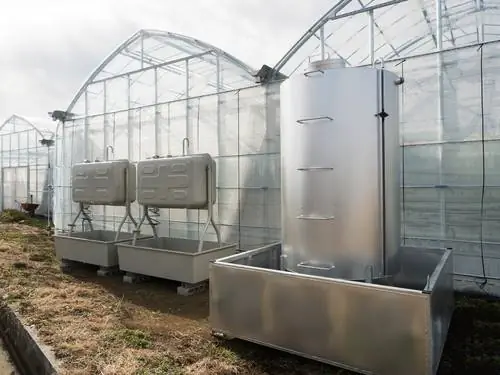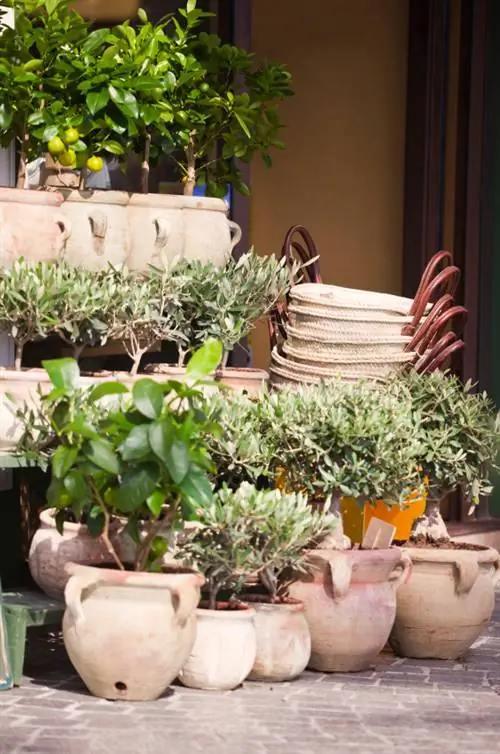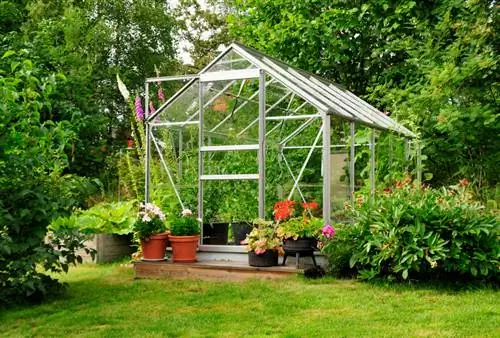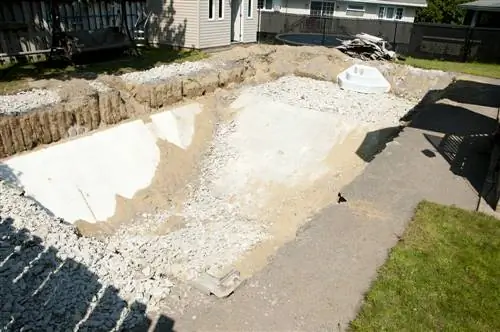- Author admin [email protected].
- Public 2023-12-16 16:46.
- Last modified 2025-01-23 11:22.
In the winter months, fresh vegetables from your own garden are rare. Aromatic tomatoes, juicy peppers and crisp salads that you find in the supermarket counter, however, usually have a long transport journey behind them. If you heat your greenhouse, you can grow and harvest crops all year round.
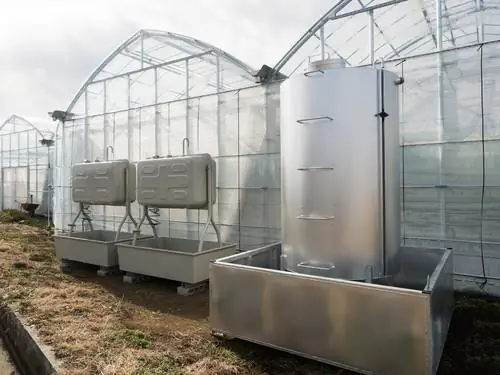
How can I heat my greenhouse?
There are several options for heating a greenhouse: candles, connection to the house's heating system, individual oil oven, individual gas oven, electric oven, wood stove and solar power. Each method has its own advantages and disadvantages in terms of cost, effectiveness and environmental friendliness.
We would like to explain the following options and their advantages and disadvantages in more detail in the following article:
- Candles
- Connection to the heating system of a residential building
- Single oil furnace
- Single gas oven
- Electric oven
- Wood stove
- Solar power
Heating the greenhouse with candles
This variant is very easy to implement and at the same time the cheapest. However, the temperature can only be increased by a few degrees in this way. A small tea light oven that you can build yourself or buy has proven to be useful. This converts the convection heat from the candle into radiant heat. If you set up several of these heating sources, the greenhouse can be warmed up by one to four degrees. This is usually enough to keep the greenhouse frost-free.
Connect the greenhouse to the house's heating system
This is probably the cheapest and most effective option in terms of running costs. The hot water produced in the house is routed directly via a pipe system to the radiator in the glass house. However, the installation effort is quite high and can usually only be carried out by a heating expert.
Single oil furnace
You can heat the greenhouse yourself using a small oven fired with fossil fuel oil. It has a combustion chamber and an integrated oil tank that needs to be filled regularly. Because of the harmful gases produced during combustion, it requires a drain installed by a specialist. However, the individual oil furnace is no longer quite up to date in terms of environmental aspects.
Single gas oven
Especially if you use renewable biogas, gas heaters make more ecological sense than a single oil oven. In addition, the efficiency of a gas oven is higher than that of an oil oven and significantly fewer exhaust gases are produced during combustion. The gas heating increases the CO2 content inside the greenhouse, which has a positive effect on plant growth. You can fuel the oven with individual gas bottles or via a gas tank placed outside the greenhouse.
Electric oven
It makes sense to heat the greenhouse with electricity. However, considering the entire winter season, this is a very expensive alternative. This is only worthwhile if you want to increase the temperature by a few degrees in late autumn and spring.
Wood stove
This option is not recommended because the heat radiated by wood-fired stoves cannot be regulated well. You also have to add fuel several times a day. A suitable smoke evacuation through the side wall or roof is also essential.
Solar Greenhouse Heater
This variant is very ecologically friendly and ensures an even temperature in the glass house, but the installation is not entirely inexpensive. If solar energy is not enough, you may have to heat with electricity.
Tip
To keep out frost, the greenhouse should have good insulation. Translucent bubble wrap is cheap and effective and can be applied in several layers. The film can be easily removed in spring and can be reused next winter.

